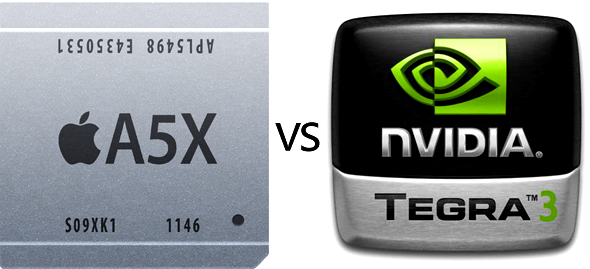Even though the specs of the new iPad had been documented by Apple upon the launch on March 7th, it’s almost impossible to gauge the true performance of the new hardware until it’s unboxed, charged-up, and pitched against other, similar products on the market.
Prior to the Keynote speech, in which the fruit company also announced a refreshed Apple TV, the technology world presumed – with both the iPad 2 and iPhone 4S packing an A5, dual-core processor – that Apple would kick off 2012 with an A6, quad-core chip in its third iPad device.

Then again, it was also expected to be called the iPad 3, or iPad HD, but nonetheless, Apple did introduce its A5X processor, a dual-core processor capable of churning out quad-core graphics. The Cupertino-based outfit claimed the new chip was in fact four times faster than the ASUS Transformer Prime Tegra 3, which has since prompted a debate among technology fans and bloggers.
RitchiesRoom decided to compare the two, by using the GL benchmark app, supplemented by a couple of other tests in order to determine the results. While the iPad certainly outperforms the ASUS model, the 4X claim does seem a little exaggerated in reality:
As you can see in the video, the GL Benchmark Egypt of the iPad is 140fps, versus the comparatively miserly 60fps of the Transformer. This test specifically put the 3D graphics performance through its paces, meaning gaming, for example, will excel on the iPad compared to rivaling devices on the market.
The browser mark, which tests html rendering, was won marginally by the Transformer, but from a JavaScript point of view, the iPad came up trumps.
The new iPad is certainly a great device. Already accounting for 5 percent of total iPad browsing in just these first few days, it seems consumers are keen to adopt the new camera, processor, beautiful Retina display and – depending on whereabouts one resides – 4G LTE.
Apps and games are currently being updated en mass to improve the quality of graphics. While this is great news in one respect, the size of the .ipa files will bloat significantly, meaning the majority 16GB users may need to go up a storage level or two in order to accommodate them.
Thanks Lim for the hat tip!
You might also like to check out:
- The New iPad Benchmarked, 1GB Of RAM Confirmed [SCREENSHOT]
- The New iPad Vs. Other Leading Tablets In The Market [COMPARISON]
You can follow us on Twitter, add us to your circle on Google+ or like our Facebook page to keep yourself updated on all the latest from Microsoft, Google, Apple and the web.

